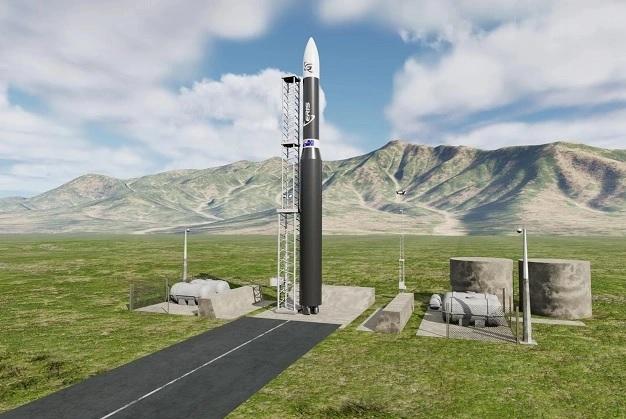
Visiting senior US Space Force officials were on the money when they said Australia is a ‘pot of gold at the end of the rainbow’ for future space operations. Australian space launch providers like Gilmore Space Technologies, Equatorial Launch Australia and Southern Launch have known for some time that Australia has advantages that enable launch vehicles to be sent into any trajectory at any inclination. The country’s geographic position and relatively clear skies make it a prime location for assured access to space. Global companies such as Virgin Orbit have taken notice and are beginning to establish their footprints in Australia to take advantage of these competitive strengths.
If heeded, calls for deeper cooperation between governments and the commercial space sector are likely to attract further foreign investment and put Australia’s space sector on a growth path for many years to come. The challenge, however, remains how to enable such investment while ensuring that Australian launch providers can effectively compete for contracts.
Fortunately, precedents from other jurisdictions provide some answers to this challenge. The European Union mandates that first preference be given to launchers developed by the European Space Agency, followed by Russia’s Soyuz launcher and then any others (though Russia’s war in Ukraine means the Soyuz launcher is no longer a viable option). The US applies similar protective measures by requiring US government satellites to be launched only on US launch vehicles.
There are good reasons for introducing such measures. First, they protect the growth of sovereign space industries and the social and economic benefits they provide. Second, they give policymakers the necessary levers to pull during times of crisis—something the US government knows all too well from past events in other industries. The Jones Act of 1920, for instance, was implemented because of concerns over national defence after the belligerent countries withdrew their merchant fleets to assist in the war effort during World War I, which had a direct impact on the US economy and its later efforts to enter the war. The act was introduced in a bid to subsidise the American merchant navy, which the US military could use in a future war if required.
There’s also the US Civil Reserve Air Fleet program, which was used last year to engage US airlines in evacuating Americans from Afghanistan. The program was established in 1951 following a shortage of US military air-transport capacity during the Berlin airlift. The civil carriers participating in the program ‘are given preference in carrying commercial peacetime cargo and passenger traffic’ for defence-related mission.
Recognising the benefits of such measures, a parliamentary committee inquiry recommended in November 2021 that future government contracts give priority to Australian-owned and -operated space assets. There are already Australian laws in place that grant the government certain rights if there’s a determination that national security is at risk. The recommendation from the committee, however, is just as much about national security as it is about economic prosperity. The policy mechanism is intended to create certainty and work for Australian start-ups and small and medium-sized enterprises while ensuring that Australia develops sovereign capabilities for access to space to protect its interests.
Some may argue that such measures are protectionist and anti-competitive. But, as the Civil Reserve Air Fleet program demonstrates, when applied appropriately, they can give the government the necessary levers in times of need and still allow an industry to remain viable. For Australia’s space sector, this can be achieved by prioritising a sovereign launch capability and investing significantly to support it. This is far from an uncompetitive blanket protectionist policy. If targeted foreign investment is done well, including by introducing other launch companies, it can help stimulate demand and the broader economy around launch, which will help Australian launchers along the way. But such measures will require sophistication and will need to allow policy mechanisms to be recalibrated as necessary.
Australia hasn’t needed to implement such policies for at least the past three decades. The lack of a large industrial manufacturing base means that Australia has relied instead on the globalised marketplace to fulfil its needs. Another tool that has been widely used in defence acquisitions is the US foreign military sales program. However, while using these mechanisms might resolve an immediate concern, in the long run, they inherently prioritise the growth of another nation’s space capabilities at the expense of Australia’s sovereign space industry. As I argued in a previous article, relying mainly on market-based solutions without considering potential national security risks is fraught with danger which, if realised, will require long lead times and costly solutions down the track.
As Australia’s space industry continues to grow and mature, the government needs to consider prioritising Australian companies for both civilian and defence purposes to help develop a vibrant and competitive sovereign space industry in Australia. This is not a zero-sum game in which the benefits that accrue to Australia’s sovereign launchers come at the expense of global space organisations. But without a level playing field Australian companies will remain at a disadvantage against the more established corporations for the foreseeable future. More importantly, it will mean that Australia will continue to rely on global companies to meet its sovereign needs. If the Ukraine war and the US’s historical experiences are anything to go by, we should not put all our eggs in one global basket and should instead try to mitigate any potential risks by supporting Australia’s space industry to complement existing global players for a prosperous future.